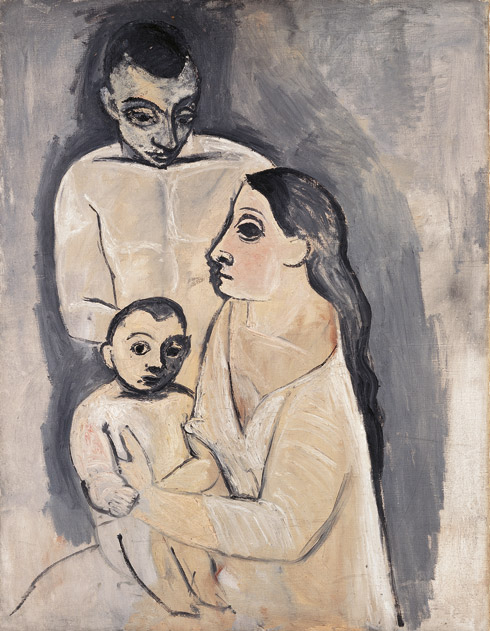- March 18 to September 14, 2015
Picasso thus returns again to the Prado, but on this occasion through the Swiss museum’s works that best fit in with the exhibition message as they reflect, in the form of an essential anthology, some of decisive moments in the artist’s career, such as the end of his blue and rose periods, his foray into synthetic cubism, his return to “neoclassicism”, his experience during the war and the retrospective experiments of the last years of his life. The showing of this set of Picasso masterpieces revives the artist’s personal and artistic link with the Museo del Prado, which he directed during the Civil War years, and sparks a fruitful dialogue with great artists of the Renaissance and Baroque.
The ten Picassos include the first paintings brought to the Kunstmuseum Basel by its director Georg Schmidt –
Bread and Fruit Dish with Fruit on a Table (1908–9), a key work from the painter’s pre-cubist phase;
Girls on the Banks of the Seine, after Courbet (1950), a splendid reworking of the French master’s painting;
and Woman with Hat seated in Armchair (1941–42),
which were incorporated into the Swiss museum’s holdings in 1951, 1955 and 1967, respectively.
They are joined by The Aficionado
and Woman with a Guitar,
paintings that were part of La Roche’s first gift to the museum in 1952.
Two Brothers, executed in Gósol at the beginning of the summer of 1906,
and Seated Harlequin (1923), a portrait of his painter friend Jacinto Salvadó which will be shown outside the Swiss canton for the first time in the Prado exhibition,
were deposited at the Kunstmuseum Basel by Rudolf Staechelin in 1947 and sold twenty years later by his son Peter.
The acquisition of these works stemmed from an initiative of the citizens of Basel, who decided in a referendum, and was made possible by the participation of public institutions and private contributions. Picasso was touched by this unusual occurrence, which prompted him to give the city a large study and three paintings that can also be seen at the Prado during this exhibition:
Man, Woman and Child of 1906
and Venus and Love
and The Couple,
both executed in 1967.
The show thus celebrates the collaboration between two longstanding European public museums through the gaze – a blend of tradition and avant-garde – of the main herald of modernity. These ten outstanding works from the Kunstmuseum Basel survey his artistic career from the summer of 1906 – his Iberian period preceding the explorations that led to Cubism – to the very free and rather melancholic works of the late period, in 1967.





%2C_oil_on_canvas%2C_141.4_x_97.1_cm%2C_Kunstmuseum_Basel.jpg)



